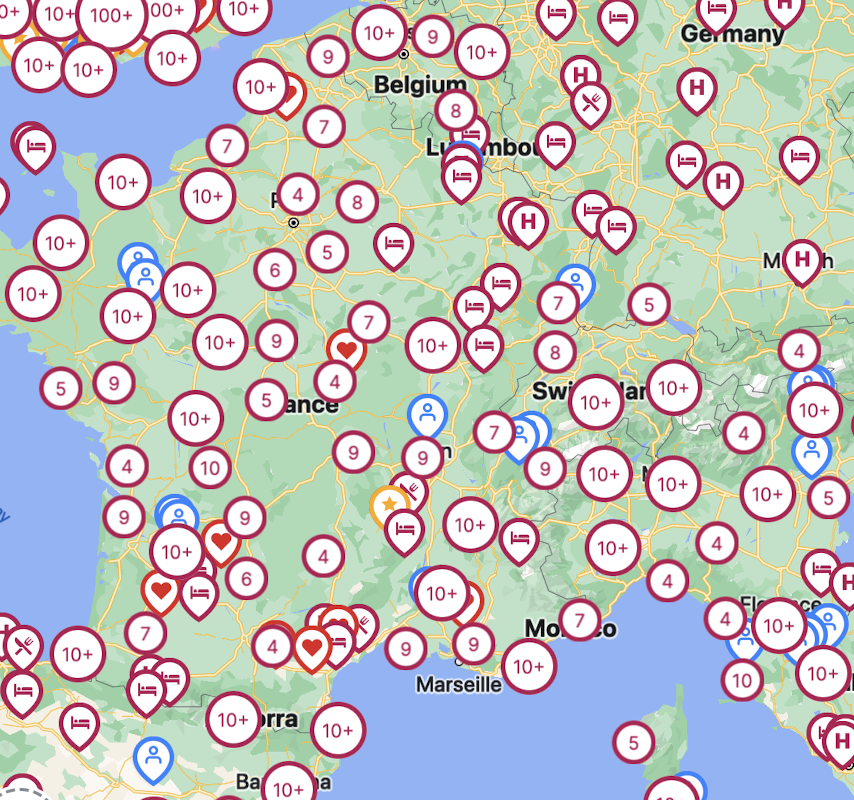Flying a Helicopter in France

Flying a Helicopter in France
Updated 2025
France is one of Europe’s most helicopter-friendly countries, offering a mix of accessible countryside, welcoming landowners and breathtaking scenery. At the same time, it is one of the more regulated environments, with a strong emphasis on paperwork and prefectural oversight. Pilots who prepare properly are rewarded with a smooth experience and a wide choice of destinations.
1. Regulatory Overview
1.1 EASA Compliance
As in all EU states, operations in France are based on EASA’s Rules of the Air. Pilots should first be familiar with the common European framework before looking at the French variations.
1.2 VFR Flight Plans
French requirements mirror the rest of Europe. Flight plans are mandatory when crossing an international border and are strongly recommended for longer domestic flights to ensure ATC coordination.
1.3 Off-Airfield Landings
France takes off-airfield activity seriously. A helisurface permit is normally required for private sites, obtained through the local préfecture. The process can take two months, and flying without one carries heavy penalties, including fines of up to €10,000 or even the risk of aircraft seizure. Pilots are expected to carry the certificate in the aircraft, complete with official stamps and seals. Movement limits are also enforced: a site may be used for no more than 200 landings a year and 20 in a single day, unless additional approval has been granted for a specific event.
1.4 Aircraft Documents & Insurance
Authorities expect to see the full suite of aircraft documents, along with proof of third-party liability insurance. Helipads must remain accessible to police inspectors. For operations into confined areas, pilots are required either to hold a CPL(H) or to have logged at least 300 hours as a private pilot.
2. Controlled Airspace & ATC

ATC procedures are straightforward, with English widely spoken in controlled airspace. At smaller regional fields, however, French is common on frequency. Many visiting pilots brush up their phraseology before arrival, and the Flying in French guide remains a useful refresher.
3. Landing Sites
3.1 Certified Sites and Helipads
Helistations and certified pads operate much like aerodromes, regulated by the DGAC. Every manoeuvre within 150 metres of the pad is logged as a movement, which counts towards the site’s annual or daily allowance.
3.2 Municipal Notification
If operations are likely to exceed the permitted numbers, pilots or operators must inform the local préfecture. French préfets also hold the authority to impose additional restrictions for reasons ranging from noise to environmental protection.
3.3 Regional Variations
Maritime helisurfaces fall under the maritime préfet, who usually requires consultation with several agencies before granting approval. Urgent operations can be authorised more quickly, but this is the exception rather than the rule.
4. Fuel Availability
Avgas and JetA1 are available at most larger airports, but smaller airfields may offer only one grade or none at all. Pilots should confirm availability before routing and consider carrying sufficient reserves for remote areas.
5. Terrain and Airspace Considerations
5.1 Mountain Flying
France offers some of the most spectacular mountain flying in Europe, from the Alps to the Pyrenees. Dedicated training is essential, and visiting pilots are encouraged to take a course before attempting serious alpine operations. Guidance is available from several schools, including mountain flying information.
6. Where to Fly: Scenic Areas
The Loire Valley is particularly attractive, with châteaux that welcome helicopters and overnight stays that can be surprisingly affordable. Provence is another favourite, combining vineyards, historic villages and Mediterranean landscapes. For the adventurous, the French Alps provide dramatic backdrops but also demand careful preparation. The Atlantic coast, with its long sandy beaches and fishing ports, makes a relaxing contrast to inland flying.

7. Useful Links and Tools
The official SIA website hosts French airfield plates and should be the first stop for planning. Helipaddy Premium provides access to a large database of private landing sites across the country. For language, Flying in French helps polish the essentials, while mountain pilots will benefit from specialist resources such as mountain flying information.



2 thoughts on “Flying a Helicopter in France”